-
 Bitcoin
Bitcoin $102,662.5363
4.85% -
 Ethereum
Ethereum $2,193.0670
19.81% -
 Tether USDt
Tether USDt $0.9999
-0.02% -
 XRP
XRP $2.3038
7.50% -
 BNB
BNB $625.3061
3.85% -
 Solana
Solana $162.5747
9.35% -
 USDC
USDC $1.0000
-0.02% -
 Dogecoin
Dogecoin $0.1948
11.09% -
 Cardano
Cardano $0.7630
11.78% -
 TRON
TRON $0.2574
3.22% -
 Sui
Sui $4.0011
17.05% -
 Chainlink
Chainlink $15.7755
11.92% -
 Avalanche
Avalanche $22.1531
11.42% -
 Stellar
Stellar $0.2965
12.70% -
 Shiba Inu
Shiba Inu $0.0...01431
10.58% -
 Bitcoin Cash
Bitcoin Cash $418.8427
3.36% -
 Hedera
Hedera $0.1947
9.85% -
 UNUS SED LEO
UNUS SED LEO $8.8625
0.49% -
 Toncoin
Toncoin $3.1835
5.09% -
 Hyperliquid
Hyperliquid $23.2143
10.04% -
 Litecoin
Litecoin $94.7248
4.08% -
 Polkadot
Polkadot $4.4824
10.46% -
 Monero
Monero $301.2717
6.79% -
 Dai
Dai $1.0001
-0.02% -
 Bitget Token
Bitget Token $4.4883
5.14% -
 Pi
Pi $0.6881
13.78% -
 Ethena USDe
Ethena USDe $1.0000
-0.06% -
 Pepe
Pepe $0.0...01096
30.81% -
 Uniswap
Uniswap $6.0905
23.37% -
 Bittensor
Bittensor $424.6065
12.59%
What are the formal platforms for Centrifuge(CFG) currency?
Centrifuge's interconnected platforms, including Centrifuge Chain, Tinlake, and Altair, enable the tokenization, financing, and trading of real-world assets, expanding access to capital for businesses and investors.
Dec 08, 2024 at 11:21 pm
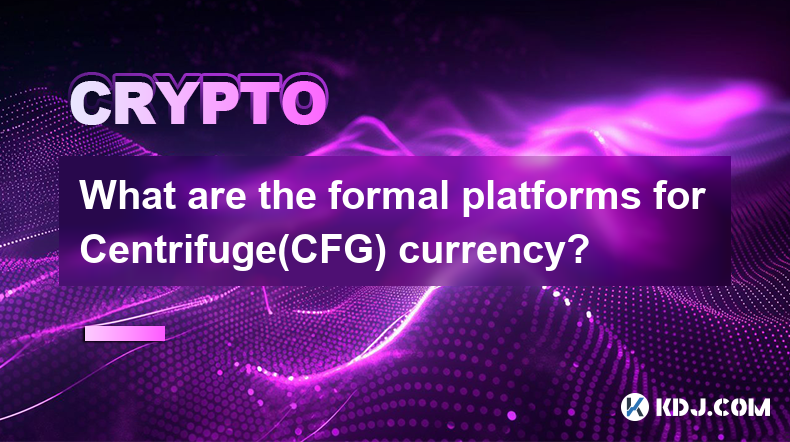
Formal Platforms for Centrifuge (CFG) Currency
Centrifuge (CFG) is a cutting-edge decentralized protocol that transforms real-world assets into digital, tradable tokens. This unlocks new possibilities for financing and liquidity in various asset classes, particularly in sectors that have historically faced challenges accessing traditional capital markets.
1. Centrifuge Chain
Centrifuge Chain is the core blockchain platform that powers the Centrifuge ecosystem. It provides the technical infrastructure for:
- Tokenization of real-world assets, creating asset-backed tokens (ABTs)
- Asset verification and due diligence by trusted Tinlake underwriters
- An institutional-grade settlement layer for ABTs
- Decentralized custody of ABTs through multi-party computation (MPC)
- A native utility token, CFG, which is used to pay transaction fees, stake for rewards, and participate in Proof-of-Stake consensus
2. Tinlake
Tinlake is Centrifuge's flagship decentralized finance (DeFi) application built on Centrifuge Chain. It allows users to:
- Create asset-backed tokens (ABTs) through a rigorous underwriting process
- Invest in ABTs representing various real-world assets, such as trade receivables, real estate, and infrastructure projects
- Earn yield as a lender or borrower on a transparent and data-driven platform
- Access a diverse range of asset classes not typically available in DeFi
3. Centrifuge Anchor
Centrifuge Anchor is a scalable off-chain technology that connects Centrifuge Chain to other blockchain networks. It serves as a bridge between the Centrifuge ecosystem and external applications and protocols, enabling:
- Cross-chain token transfers between Centrifuge Chain and supported networks
- Integration of non-Ethereum-based assets into the Centrifuge ecosystem
- Access to Centrifuge's institutional-grade settlement infrastructure for assets from other blockchains
4. Altair
Altair is a decentralized liquidity protocol built on Centrifuge Chain. It provides:
- Automated market-making (AMM) for asset-backed tokens (ABTs)
- On-chain price discovery mechanisms for ABTs
- Liquidity pools that allow users to swap ABTs for tokens from other blockchains
- Reduced slippage and increased efficiency in ABT trading, enhancing market depth
5. Spin Protocol
Spin Protocol is a decentralized derivatives protocol that leverages Centrifuge Chain for collateralization. It enables users to:
- Create synthetic assets through liquidity pools backed by real-world asset portfolios
- Trade synthetic assets that represent indexes or baskets of real-world assets
- Use synthetic assets as collateral for further financial applications, empowering DeFi with the stability of real-world assets
6. Monolith
Monolith is a decentralized custody solution for crypto assets, including ABTs. It provides:
- Secure storage of private keys using multi-party computation (MPC)
- Institutional-grade custody for ABTs and other crypto assets
7. Open protocol integrations
Centrifuge actively collaborates with various other protocols and platforms in the blockchain ecosystem. Key partnerships include:
- Chainlink: Integration with Chainlink's decentralized oracle network for secure and reliable data feeds
- Ethereum: Cross-chain compatibility between Centrifuge Chain and the Ethereum ecosystem, allowing users to bridge ABTs to Ethereum for further DeFi applications
- Filecoin: Integration with Filecoin's decentralized storage network to ensure secure and permanent record-keeping of asset data
Disclaimer:info@kdj.com
The information provided is not trading advice. kdj.com does not assume any responsibility for any investments made based on the information provided in this article. Cryptocurrencies are highly volatile and it is highly recommended that you invest with caution after thorough research!
If you believe that the content used on this website infringes your copyright, please contact us immediately (info@kdj.com) and we will delete it promptly.
- The PEDIGREE® brand launched PEDIGREE® DRIZZLERS™ Sauce, a mealtime sauce made just for dogs that brings bold flavors to every bite
- 2025-05-09 10:06:38
- The GENIUS Act Failed to Pass Cloture in the United States Senate on May 8
- 2025-05-09 10:06:38
- The 2025 Meme Wave Has Arrived: FloppyPepe (FPPE) Is Making Serious Noise
- 2025-05-09 10:01:06
- Stellar (XLM) Shows Renewed Momentum, Up 10% in the Last 24 Hours
- 2025-05-09 10:01:06
- Tron (TRX) Prepares for the Next Chapter as Ruvi, an Emerging Crypto Superstar, Captures the Spotlight
- 2025-05-09 09:55:12
- Dogecoin price regained and moved past $0.17
- 2025-05-09 09:55:12
Related knowledge
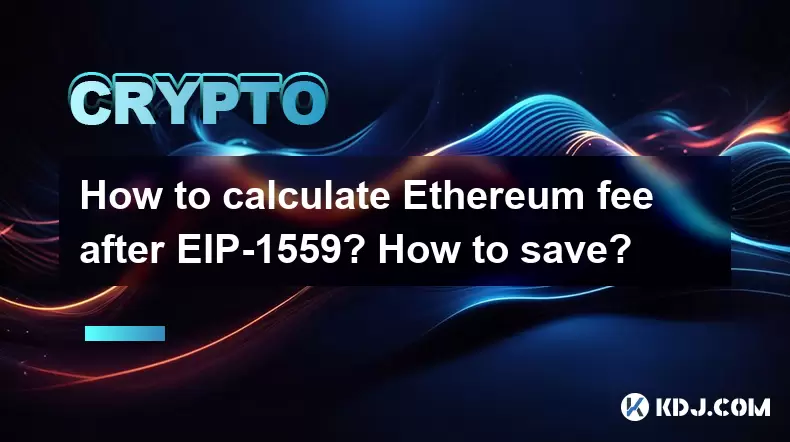
How to calculate Ethereum fee after EIP-1559? How to save?
May 09,2025 at 08:01am
The introduction of EIP-1559 in August 2021 brought significant changes to the Ethereum network's fee structure, revolutionizing how users interact with transaction costs. This article will delve into the specifics of how to calculate Ethereum fees post-EIP-1559 and offer strategies to save on these fees. Understanding EIP-1559 and its ComponentsEIP-155...
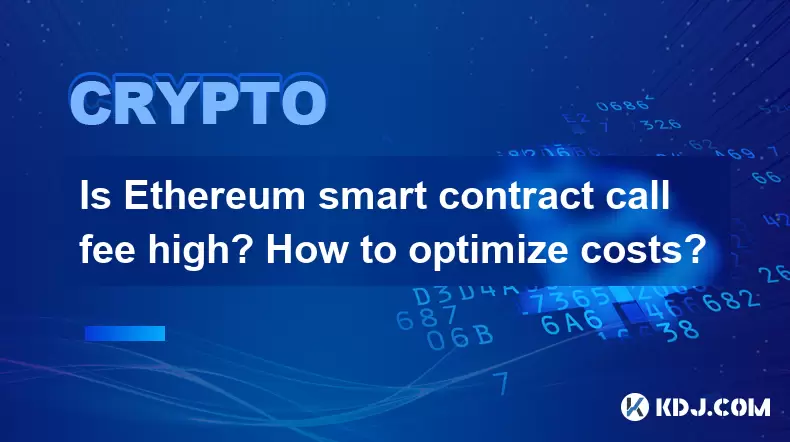
Is Ethereum smart contract call fee high? How to optimize costs?
May 08,2025 at 09:35am
Is Ethereum Smart Contract Call Fee High? How to Optimize Costs? The world of Ethereum smart contracts has revolutionized the way we think about decentralized applications and blockchain technology. However, one of the most frequently discussed topics within this realm is the cost associated with executing smart contract calls. In this article, we will ...
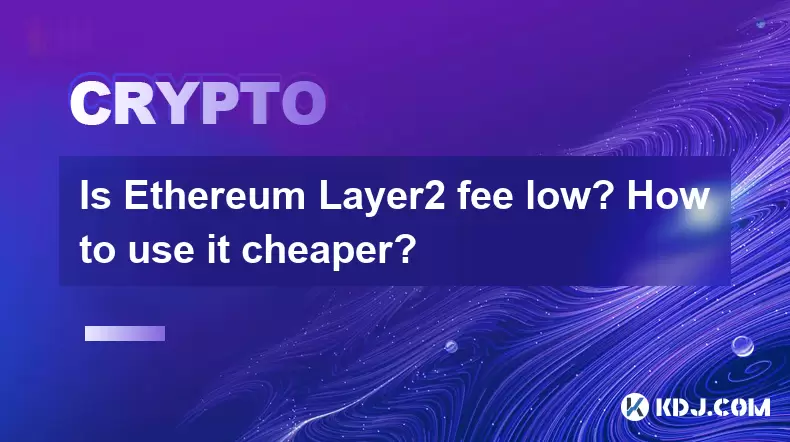
Is Ethereum Layer2 fee low? How to use it cheaper?
May 08,2025 at 03:56am
The question of whether Ethereum Layer 2 solutions offer lower fees and how to use them more economically is a topic of great interest within the cryptocurrency community. Ethereum's Layer 2 solutions have been developed to address the high transaction fees and scalability issues associated with the main Ethereum network. In this article, we will delve ...

How to calculate Ethereum network fee? How to reduce transaction costs?
May 08,2025 at 02:15am
Understanding and managing Ethereum network fees is crucial for anyone involved in transactions on the Ethereum blockchain. The network fee, also known as gas fee, is the amount of Ether (ETH) required to successfully conduct a transaction or execute a smart contract on the Ethereum network. Calculating these fees and finding ways to reduce them can sig...
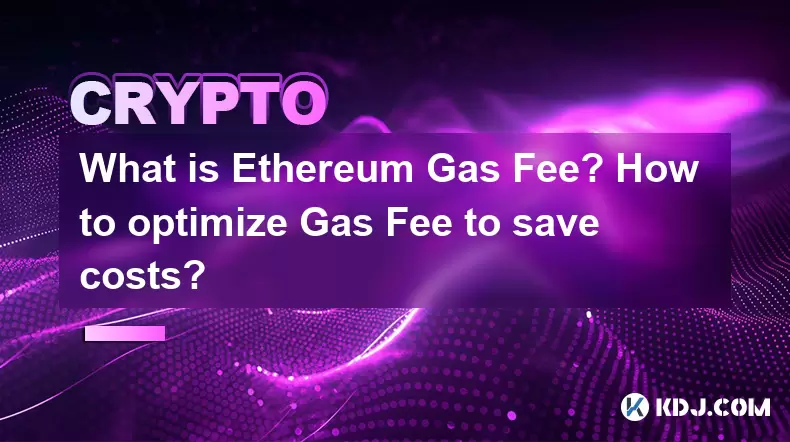
What is Ethereum Gas Fee? How to optimize Gas Fee to save costs?
May 08,2025 at 03:43am
Ethereum gas fees are a crucial aspect of interacting with the Ethereum blockchain. Understanding and optimizing these fees can significantly impact the cost-effectiveness of transactions and smart contract interactions. In this article, we will delve into what Ethereum gas fees are, how they are calculated, and provide detailed strategies for optimizin...
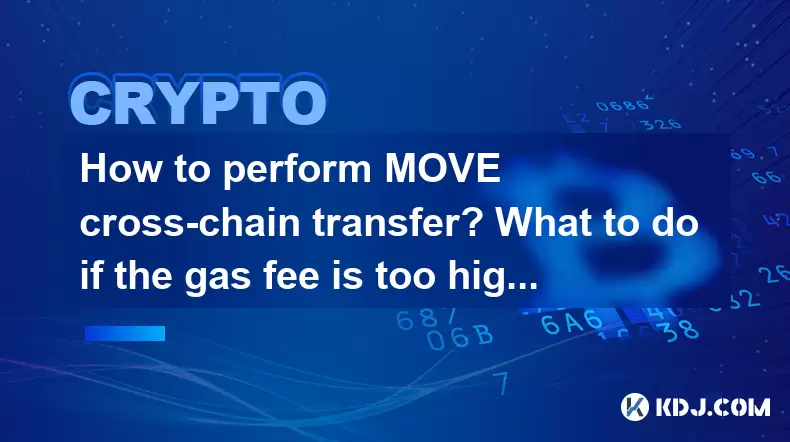
How to perform MOVE cross-chain transfer? What to do if the gas fee is too high?
May 07,2025 at 08:03pm
Introduction to MOVE Cross-Chain TransferCross-chain transfers have become an essential part of the cryptocurrency ecosystem, allowing users to move assets between different blockchain networks. One of the popular protocols for achieving this is the MOVE cross-chain transfer. This article will guide you through the process of performing a MOVE cross-cha...

How to calculate Ethereum fee after EIP-1559? How to save?
May 09,2025 at 08:01am
The introduction of EIP-1559 in August 2021 brought significant changes to the Ethereum network's fee structure, revolutionizing how users interact with transaction costs. This article will delve into the specifics of how to calculate Ethereum fees post-EIP-1559 and offer strategies to save on these fees. Understanding EIP-1559 and its ComponentsEIP-155...

Is Ethereum smart contract call fee high? How to optimize costs?
May 08,2025 at 09:35am
Is Ethereum Smart Contract Call Fee High? How to Optimize Costs? The world of Ethereum smart contracts has revolutionized the way we think about decentralized applications and blockchain technology. However, one of the most frequently discussed topics within this realm is the cost associated with executing smart contract calls. In this article, we will ...

Is Ethereum Layer2 fee low? How to use it cheaper?
May 08,2025 at 03:56am
The question of whether Ethereum Layer 2 solutions offer lower fees and how to use them more economically is a topic of great interest within the cryptocurrency community. Ethereum's Layer 2 solutions have been developed to address the high transaction fees and scalability issues associated with the main Ethereum network. In this article, we will delve ...

How to calculate Ethereum network fee? How to reduce transaction costs?
May 08,2025 at 02:15am
Understanding and managing Ethereum network fees is crucial for anyone involved in transactions on the Ethereum blockchain. The network fee, also known as gas fee, is the amount of Ether (ETH) required to successfully conduct a transaction or execute a smart contract on the Ethereum network. Calculating these fees and finding ways to reduce them can sig...

What is Ethereum Gas Fee? How to optimize Gas Fee to save costs?
May 08,2025 at 03:43am
Ethereum gas fees are a crucial aspect of interacting with the Ethereum blockchain. Understanding and optimizing these fees can significantly impact the cost-effectiveness of transactions and smart contract interactions. In this article, we will delve into what Ethereum gas fees are, how they are calculated, and provide detailed strategies for optimizin...

How to perform MOVE cross-chain transfer? What to do if the gas fee is too high?
May 07,2025 at 08:03pm
Introduction to MOVE Cross-Chain TransferCross-chain transfers have become an essential part of the cryptocurrency ecosystem, allowing users to move assets between different blockchain networks. One of the popular protocols for achieving this is the MOVE cross-chain transfer. This article will guide you through the process of performing a MOVE cross-cha...
See all articles






















































































